SWRA726 March 2022 CC1120 , CC1121 , CC1201 , CC1310 , CC1311P3 , CC1311R3 , CC1312PSIP , CC1312R , CC1312R7 , CC1314R10 , CC1350 , CC1352P , CC1352R , CC1354P10 , CC1354R10 , CC2340R5-Q1 , CC2640R2L , CC2651R3 , CC2652P , CC2652P7 , CC2652R , CC2652R7 , CC2652RB , CC2652RSIP , CC3130 , CC3135MOD , CC3230S , CC3235MODAS , CC3235MODASF , CC3235MODSF , CC3235S , WL1801MOD , WL1805MOD , WL1807MOD , WL1831 , WL1831MOD , WL1835MOD , WL1837MOD
- Trademarks
- 1Introduction
- 2Antenna Standing Wave Ratio (SWR) Measurement
- 3Evaluation Board Matching Components Location
- 4Volpert-Smith Chart
- 5868-MHz PCB Helix Antenna Measurement and Matching
- 62.4-GHz PCB Compact Antenna Measurement and Matching
- 7 2.4-GHz PCB Inverted-F Antenna Measurement and Matching
- 8Fast in-circuit or in-device Antenna Verification
- 9Conclusion
2 Antenna Standing Wave Ratio (SWR) Measurement
Standing wave ratio ( SWR) is an important antenna parameter. SWR represents an antenna’s impedance matching (tuning) with a transceiver (or cable, line or circuit). Engineers can use the parameter for understanding how the antenna is matched (good or poor).
The lower the SWR value, the better antenna matched (usually 50 Ohm, 75 Ohm for TV networks). Therefore, the maximum transmitting power is radiated by the antenna. The lowest SWR value is 1:1. All of the power radiates and no power reflects back to the transmitter. In reality, the SWR value cannot reach 1:1 because of parasitic components. Optimum SWR for small antenna placed on PCB, considered for each dedicated case, are normally less than 2:1. Operation bandwidth of the antenna also normally measures at SWR level of 2:1.
In addition, there is a parameter called S11 – reflection coefficient (or return loss). It represents how much power reflects back from the antenna to transmitter. Ideally, S11 has infinite value, meaning there is no reflected power and all power is radiated by the antenna. If S11 is 0 dB, there is no radiated power as it all reflects back to transmitter.
 Figure 2-1 Radiated Power Meaning
Figure 2-1 Radiated Power MeaningFor better visibility of how SWR value relates to reflected power from the antenna back to transmitter you can use Table 2-1.
| SWR Value | Reflected Power Percentage |
|---|---|
| 1.001:1 | 0.00 |
| 1.100:1 | 0.22 |
| 1.200:1 | 0.83 |
| 1.300:1 | 1.70 |
| 1.400:1 | 2.77 |
| 1.500:1 | 4.00 |
| 1.600:1 | 5.32 |
| 1.900:1 | 9.62 |
| 2.000:1 | 11.10 |
| 2.500:1 | 18.36 |
| 3.000:1 | 25.00 |
| 5.600:1 | 48.56 |
| 7.000:1 | 56.25 |
| 10.000:1 | 66.94 |
| 20.000:1 | 81.86 |
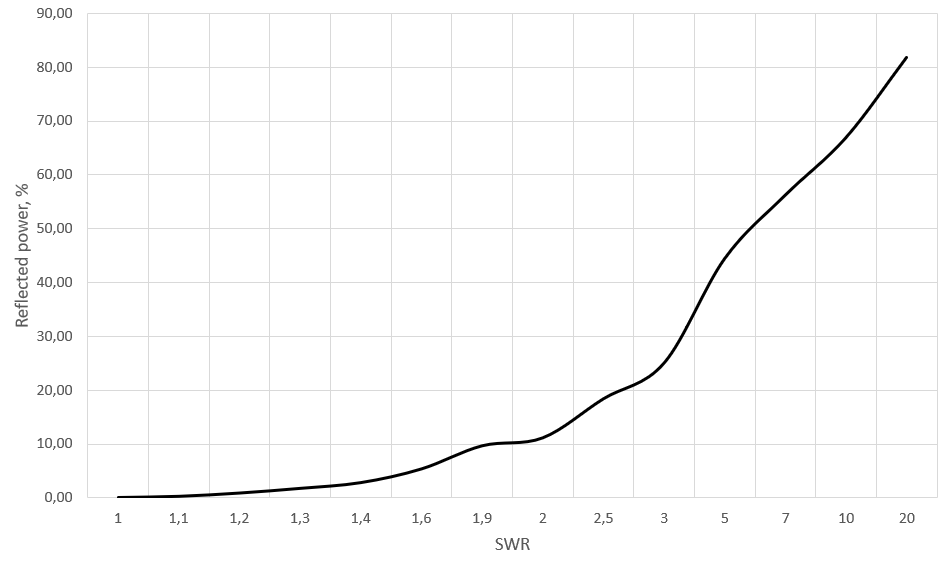 Figure 2-2 SWR Value and Reflected
Power
Figure 2-2 SWR Value and Reflected
PowerUsing Table 2-1, users can calculate how much power radiates from the antenna. For example, measured SWR value is 2:1. This means, the antenna will radiate only 88.9% (100% - 11.10%) of transmitter’s power. For battery powered devices, this can be a huge problem because with higher transmitting power, the transmitter is more power hungry. If the antenna was better matched, the lower transmitter’s power can achieve the same range. That is, we can save a battery for longer operation.
As an example, a free space SWR value of matched to a 50-Ohm SMD antenna PULSE W3013 for ISM 868-MHz band is shown in Figure 2-3.
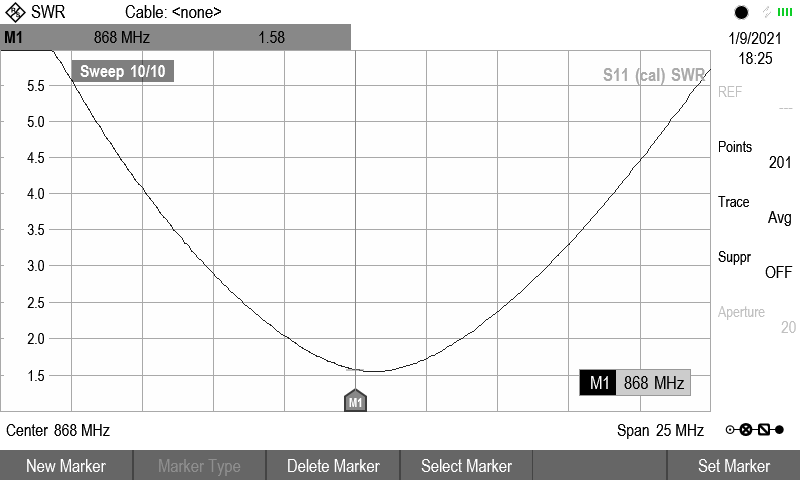 Figure 2-3 SWR Value at 868 MHz
Figure 2-3 SWR Value at 868 MHzAt frequency of 868-MHz SWR value is 1.58:1 (marker M1). Table 2-1 shows that around 5% of transmitter’s power will be lost.
Antennas are often mounted into a plastic case. For modern devices, this can be a real problem as they become smaller in size, mounting the antenna very close to the plastic. The plastic can be a huge load and detune the antenna. The level of detuning depends on plastic’s chemistry and carbon level. Let’s have a look at real example shown in Figure 2-4. It shows the same PULSE W3013 antenna mounted very close to the plastic case (distance of 1 mm).
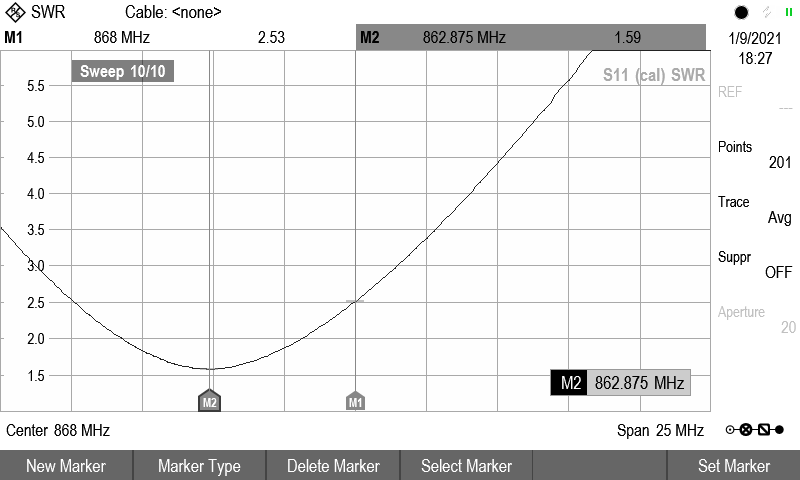 Figure 2-4 Resonant Frequency Shifting
after Casing
Figure 2-4 Resonant Frequency Shifting
after CasingThe resonant frequency shifted from 868 MHz down to 862.875 MHz (marker M2). At 868-MHz frequency, the SWR value is now 2.53:1 (marker M1). The device loses 18% power. Through a small frequency shift of 5.1 MHz, losses increased significantly (also because this particular antenna is narrow band). Users cannot predict how much the plastic will detune the antenna, so take measurements.
Another example is human body devices. Human’s body also affects the antenna. The Figure 2-5 shows an example for the same 868 MHz antenna mounted into the plastic package and placed in hand. The resonant frequency got shifted down to 847 MHz (marker M3) and SWR value at 868 MHz frequency now is 6.61:1. The power loss is around 50%.
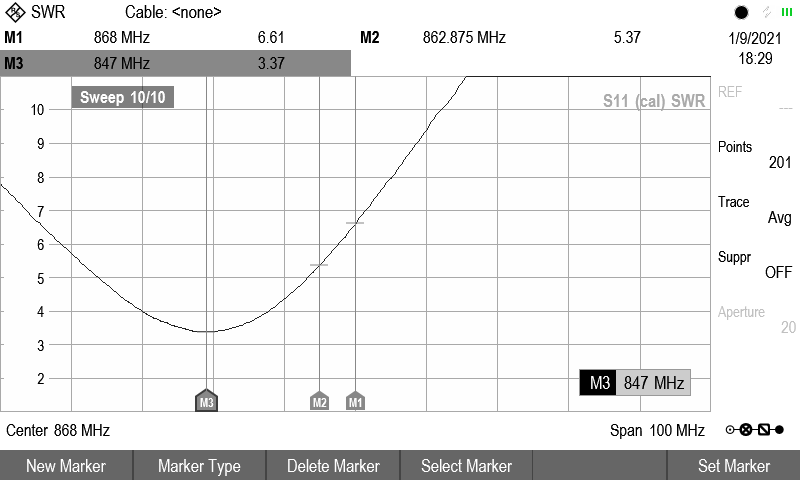 Figure 2-5 Resonant Frequency Shifting
after Casing and in Hand Placing
Figure 2-5 Resonant Frequency Shifting
after Casing and in Hand PlacingFor the antenna’s resonant frequency shifting, simply change the physical length. To get a higher operation frequency, make the length shorter (cut off). To get lower operation frequency, make the antenna longer. It’s a good idea to have some extra length during prototyping for cutting if needed. For PCB antenna, use a sharp knife or solder a piece of copper foil.
The following example shows users how to make an experimental helical antenna for 868-MHz band using a copper wire from a regular power cable (Figure 2-6).
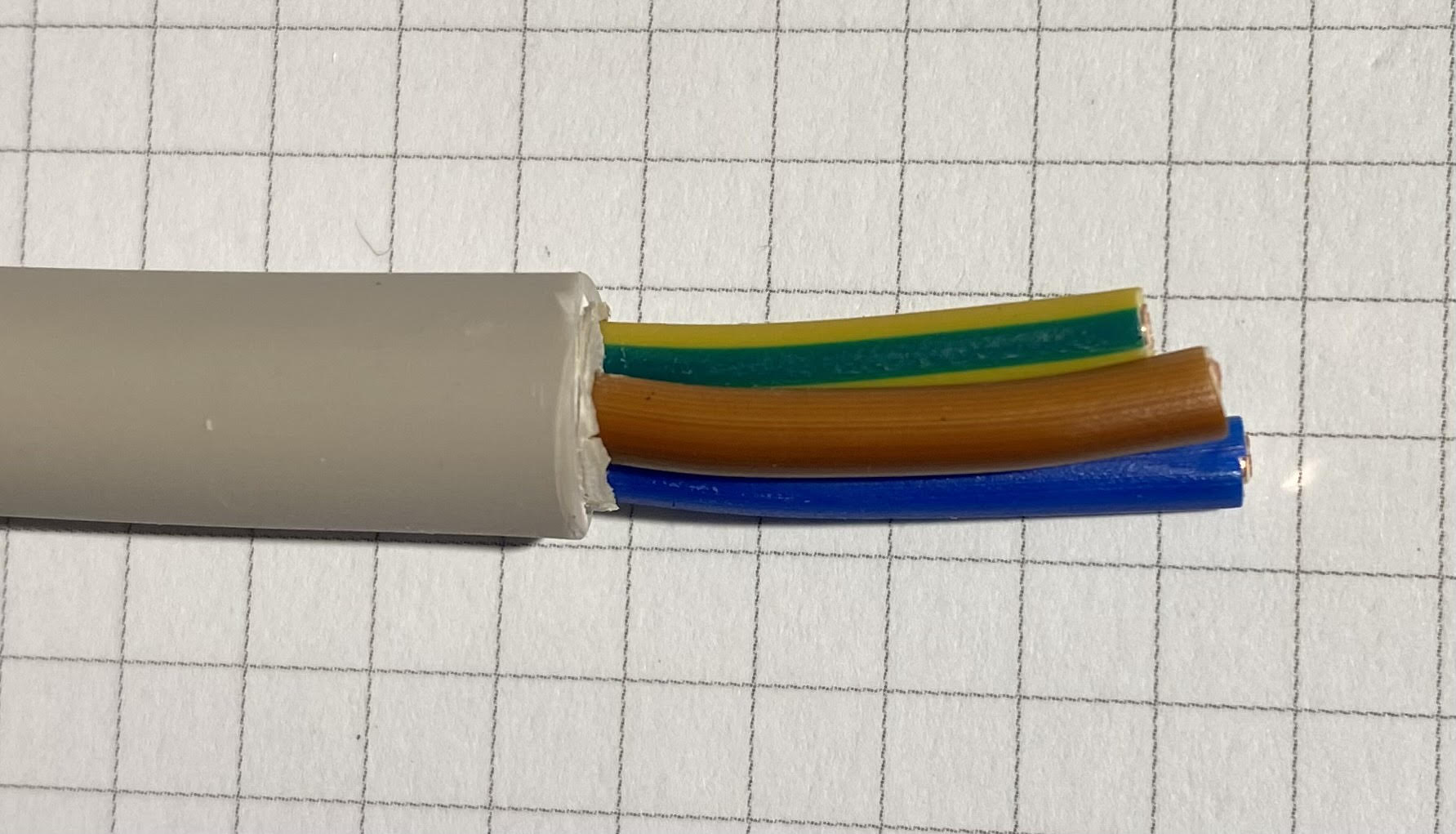 Figure 2-6 Picture of Power Cable with
Copper Wires
Figure 2-6 Picture of Power Cable with
Copper WiresMake the antenna’s length a little bit longer to have some extra length for frequency tuning (Figure 2-7). This example used a board from CC-ANTENNA-DK kit as it has SMA connector and matching network to save time connecting to VNA.
 Figure 2-7 Experimental Helix Antenna
Made from Power Cable Wire
Figure 2-7 Experimental Helix Antenna
Made from Power Cable WireFigure 2-8 shows the resonant frequency of the antenna at 744 MHz (marker M1), far from 868 MHz.
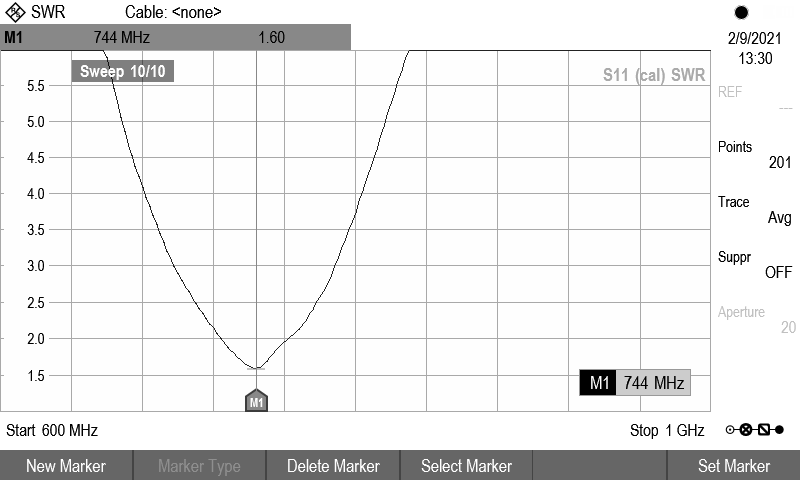 Figure 2-8 Resonant Frequency of the
Experimental Antenna
Figure 2-8 Resonant Frequency of the
Experimental AntennaTo shift the frequency up to 868 MHz, cut very small pieces off the wire until the antenna is tuned to 868 MHz (Figure 2-9 (tracking marker M2)). The SWR value is 1.30:1. Marker M1 is showing the resonant frequency before changing the antenna’s length to represent the shift.
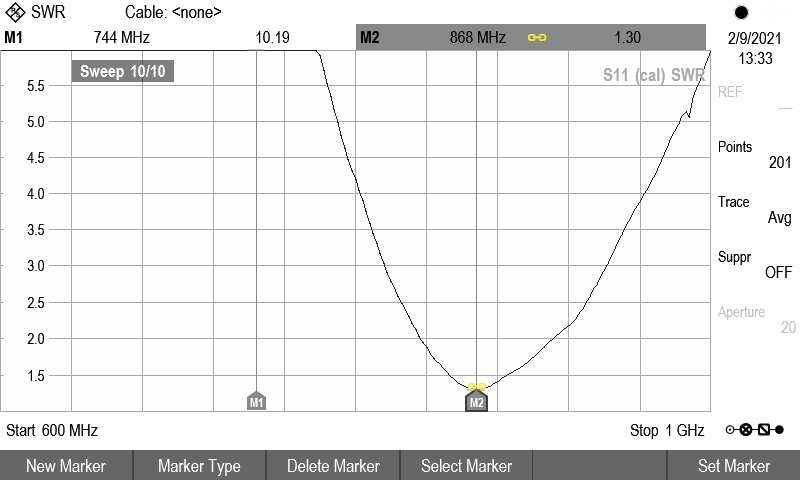 Figure 2-9 Final Resonant Frequency of
the Experimental Antenna
Figure 2-9 Final Resonant Frequency of
the Experimental AntennaFigure 2-10 shows the final length of the antenna for 868-MHz band.
 Figure 2-10 Final Length of Experimental
Antenna
Figure 2-10 Final Length of Experimental
Antenna